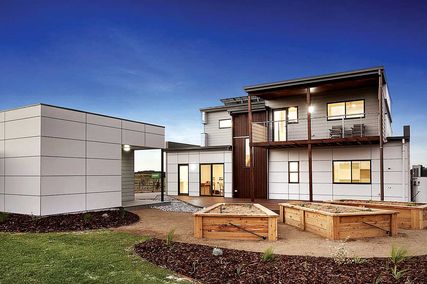The proposed National Registration Framework for Building Practitioners (NRF) will result in poorer quality buildings and less safe outcomes for the public, according to a damning submission on the policy by the Australian Institute of Architects.
Initiated by the Building Ministers’ Forum, which brings together state and federal ministers responsible for the construction sector, the NRF was developed in response to the Shergold-Weir Building Confidence report, which pointed to “significant and concerning” problems in compliance and enforcement systems for the building and construction industry.
Since that report’s publication in February 2018, the Institute has repeatedly criticized all levels of government for their failure to fully implement the 24 recommendations, particularly in the face of dramatic fires stemming from flammable cladding, and major defects uncovered in buildings including Sydney’s Opal Tower.
The Australian Building Codes Board released a discussion paper on the proposed NRF earlier in 2020, pitching it as a response to the first two recommendations of the Shergold-Weir report, which called for the registration of building practitioners involved in the design, construction and maintenance of buildings.
According to the Institute, however, the proposed registration framework directly contradicts the purpose of the Building Confidence recommendations and will fail to enhance public trust and confidence in the building industry.
A central problem is the failure to set higher levels of competence for all practitioners, and particularly for building designers and project managers.
“[The proposals] are insufficient to raise confidence in the building industry, because the bar has been set at a level that is too low to ensure quality outcomes,” states the submission, authored by Leanne Hardwicke.
The framework will allow building designers with a diploma in building design (a one- to two-year course) with three years’ post-qualification experience to be able to design building types that currently require a registered architect.
The Institute’s submission notes that registration requirements for architects are much more stringent and involve demonstration of competency through an examination and interview against national competency standards that are recognized internationally. There is currently no comparable assessment process for building designers.
“It is reasonable to state that there would be a significant reduction in public confidence in the Australian medical system if registered medical practitioners were considered equally qualified to people holding bachelor degrees in medicine or degrees in health sciences,” writes Hardwicke in the submission. “Similarly, we do not allow graduates with a medical degree who have not successfully completed the prescribed post graduate training to have the same responsibilities within medical practice.
“However, the NRF does not recognize the significant differences in education and mandatory practical experience between registered architects and others providing building design services. This lack of regulatory recognition corresponds to confusion within the community as to the role and capabilities of an architect as opposed to a designer/drafter and can result in poor quality outcomes and risks to safety.”
The Australian Building Codes Board states that the immediate goal of the framework is to help jurisdictions fill in the gaps in their registration schemes and to include NCC training in accredited qualifications, while the medium-term goal is to make the registration schemes nationally consistent to improve mutual recognition between the states and territories.
The framework states that “the core design discipline” is the registered building designer. It sets out three levels of registration for building designers: level 1 (all buildings); level 2 (Medium rise buildings); and level 3 (Low rise buildings). Registered architects would meet the requirements to be registered as building designers level 1.
The Institute notes that this categorization views architects as largely equal to building designers and other lesser qualified practitioners offering building design services, and that it would cause confusion by requiring registered architects to also be registered as building designers.
It “strongly recommends” that the categories be reconfigured so that a registered architect would be required to design buildings of more than two storeys.
Other problems with the framework, according to the Institute, include the use of the term “architect” in relation to people who are not registered, and insufficient clarity over who is qualified to provide access consulting and energy efficiency services. It also states that the barrier of entry for project managers is far too low, and that “architects must be included as project managers.”
“There must be a robust system for assessing whether a person has the competence to undertake the permitted work,” states the submission. “The aim of the NRF should be to improve competency of all building practitioners over time to an appropriate minimum standard.”
Neil Savery, Chief Executive of the Australian Building Codes Board, told ArchitectureAU that while it would be inappropriate to comment on specific criticisms of the draft framework, the board welcomed the submissions received, and would be “very open” to making changes to the framework, taking into consideration submissions from various parties. The board has contacted Institute CEO Julia Cambage, informing her that it is open to further discussion.
To read the Institute’s full submission, head here.
















